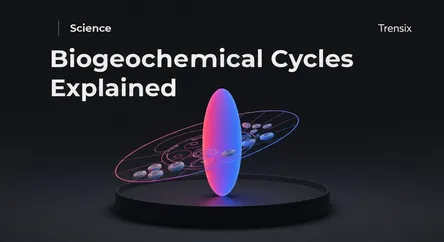Science
Biogeochemical Cycles Explained

Discover how essential elements like carbon and nitrogen are recycled through Earth's living and non-living systems in biogeochemical cycles.
What is it?
A biogeochemical cycle is the pathway an element takes as it moves through Earth's living (bio) and non-living (geo) components, like the atmosphere, oceans, and soil. These are nature's essential recycling systems, ensuring that elements like carbon, nitrogen, and water are continuously available for organisms. For example, in the carbon cycle, plants absorb CO2, animals consume plants, and decomposers return carbon to the environment. These intricate loops are fundamental to Earth’s ecological balance and make life possible.
Why is it trending?
The topic is trending because human activities are disrupting these cycles at an alarming rate, with clear links to climate change and environmental degradation. The burning of fossil fuels has overloaded the carbon cycle, leading to global warming. Likewise, agricultural runoff has added excess nitrogen and phosphorus to aquatic ecosystems, causing pollution. Understanding these cycles is now critical for climate modeling, developing sustainable policies, and finding ways to mitigate humanity's impact on the planet's life-support systems.
How does it affect people?
These cycles directly impact human survival and well-being. The nitrogen and phosphorus cycles are the basis of soil fertility, underpinning global agriculture and our food supply. The water cycle provides the fresh water essential for drinking, sanitation, and industry. When these cycles are disturbed, we see direct consequences, such as reduced crop yields, contaminated water sources, and the more frequent and intense weather events linked to a changing climate. The health of these cycles is synonymous with the health of the planet and our society.